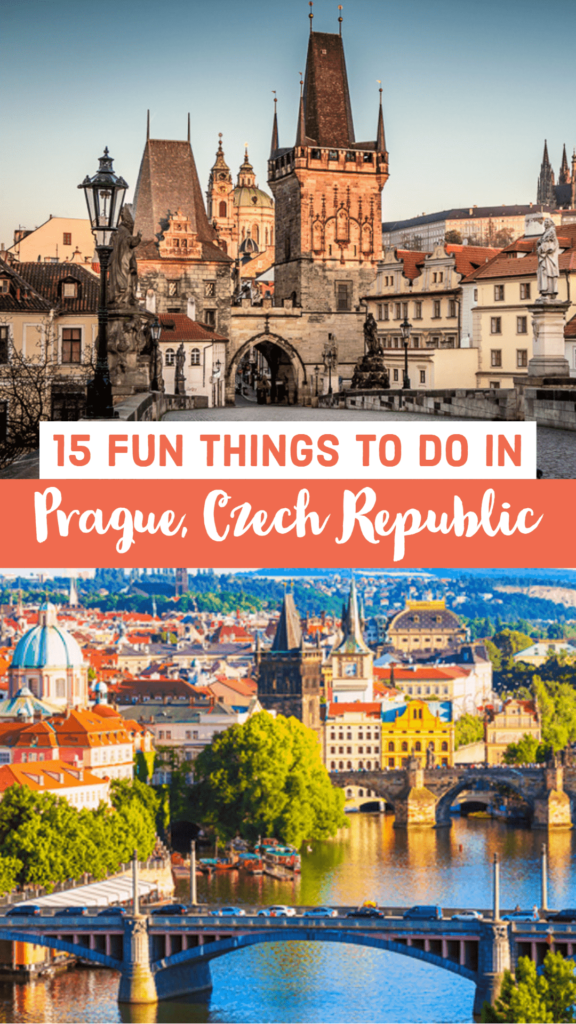This post may contain affiliate links. We may receive a small commission, at no cost to you, if you make a purchase. Read Disclosure.
Prague is nicknamed the “The Golden City of a Hundred Spires,” and it’s easy to see why, it dazzles with Gothic grandeur, baroque brilliance, and medieval buildings that connect to cobblestone streets. Known for its fairy-tale façades, Prague is by no means a dated city – it has jazz spilling from cellar bars, trams rattling through neighborhoods, and coffee shops that beckon you to stay a while.
Needless to say, you’ll never run out of things to do in Prague, it’s a city that grabs hold of your heart and makes you promise to return here.
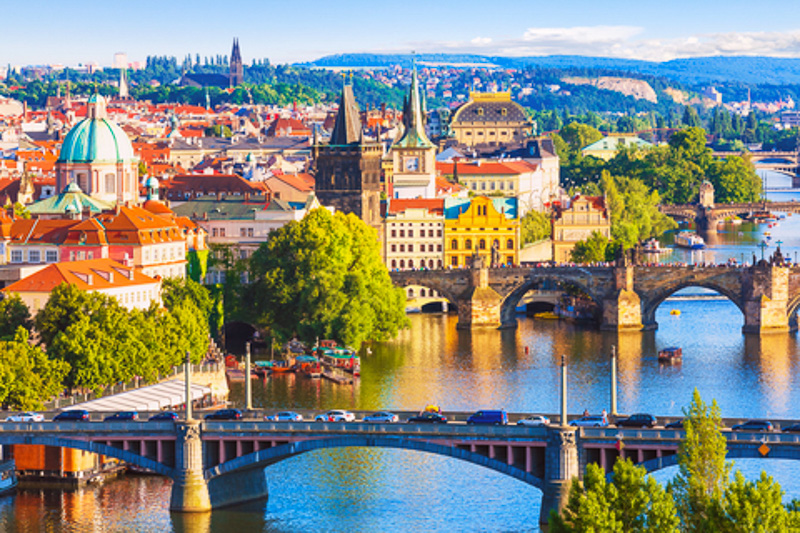
Forget Venice, Prague is the real city of love. Everywhere you look it feels romantic, from the storybook stone bridges crossing the Vltava River to the violinist playin in an Old Town Square.
Whether you’re visiting on a romantic weekend, a family trip, or backpacking across Europe, I can guarantee you’ll fall in love with this captivating city.
TOP TIP: You can save money on attractions in Prague by getting yourself a Prague City Card. This can give you discounts of up to 50% on Prague’s top attractions, restaurants and entertainment options.
1. Marvel at the Astronomical Clock
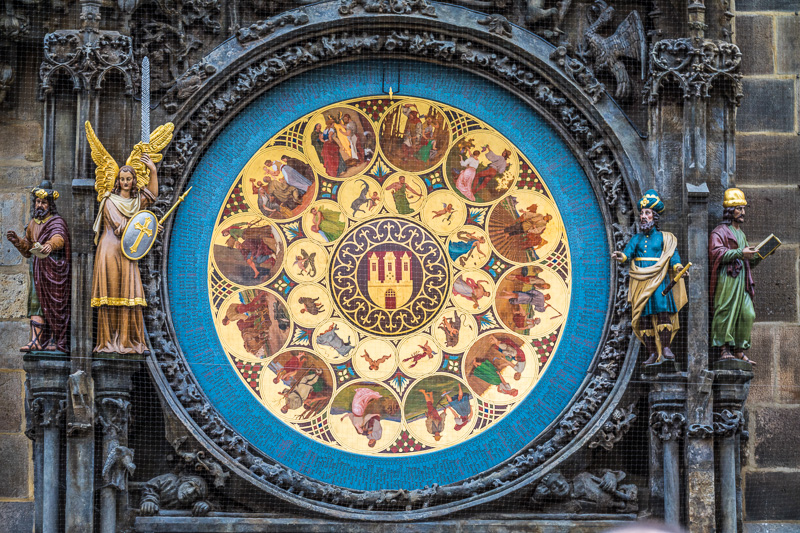 Astronomical clock close-up, orloj in Prague old town square
Astronomical clock close-up, orloj in Prague old town square
The astronomical clock is a major tourist attraction in the city. It’s located in the Old Town Square (famous for its Christmas Market), on the Old Town Hall Tower and it has been ticking away since 1410. As the world’s third-oldest astronomical clock, it’s a marvel of medieval engineering and the only one that is still operational today.
The clock has a number of different features, but the most important part is the astronomical dial. This allows you to tell the relative positions of the Sun, Moon, Earth, and Zodiac constellations. Visitors will also see a church calendar, which displays the 365 days a year and its holidays.
But perhaps what draws all the crowds to the Astronomical Clock in Prague is the hourly show known as the “Walk of the Apostles.” Two windows open to reveal twelve apostles circling the clock. As the figures move around, a rooster crows and bells ring out. It’s quite a spectacle!
2. Visit Prague Castle
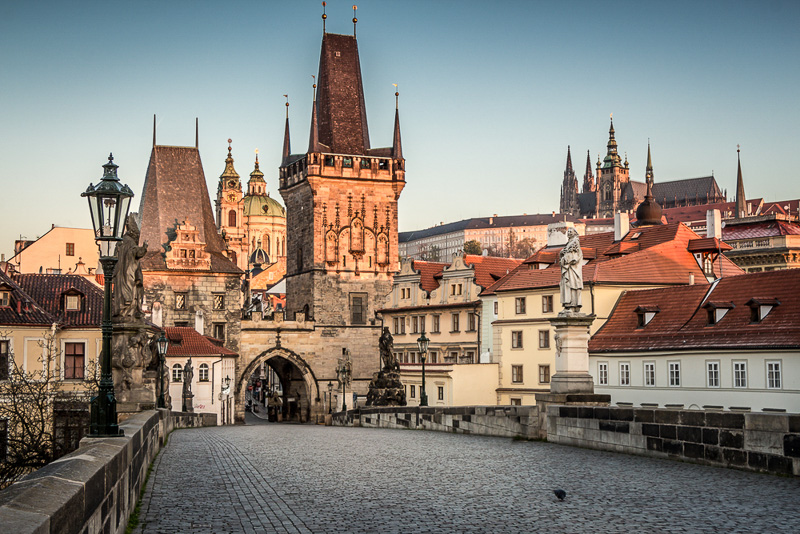 Prague View from Charles Bridge to the mala strana with the castle in the background
Prague View from Charles Bridge to the mala strana with the castle in the background
Prague Castle is one of the most recognizable landmarks in all of the Czech Republic. It is a massive complex that encompasses several buildings, including churches, palaces, and a fortress. In fact, it’s the largest ancient castle in the world.
Construction on the castle began in the ninth century, and it has been expanded and renovated over the years. Today, Prague Castle is a popular tourist destination, visited by people from all over the world.
Inside the Prague Castle complex is Saint Vitus Cathedral. This Gothic cathedral is one of the largest in Europe, and it features beautiful stained glass windows and intricate carvings. Other notable attractions in the Prague Castle include Golden Lane, a street of colorful houses dating back to the 16th century, and the Mihulka Powder Tower, which served as a cannon tower during medieval times.
Whether you’re interested in history or architecture, a visit to Prague Castle is a must-visit.
PRO TIP: Prague Castle is open until very late at night. If you want to avoid the crowds, the best time to go is in the evening. Plus, the Gothic St. Vitus Cathedral looks even more exotic in the dark! This is certainly the best thing to do in Prague at night.
3. Visit the most romantic bridge in the world; Charles Bridge
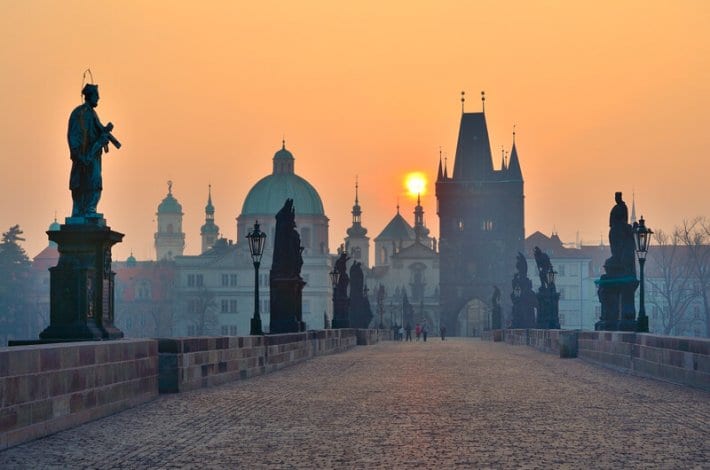 © Vitaly Titov & Maria Sidelnikova | Dreamstime.com – >Sunrise over Prague, look from Charles Bridge
© Vitaly Titov & Maria Sidelnikova | Dreamstime.com – >Sunrise over Prague, look from Charles Bridge
If you’re looking for romance, then we’ve got the perfect place for you. The Charles Bridge is one of the most famous bridges in Prague, if not, all of Europe. It was completed in 1357 and spans the Vltava River, connecting Prague Castle with the old city center.
Before it was built, the only way to cross the river was by boat. The bridge quickly became popular and soon became an important part of the city’s infrastructure. The bridge is named after Charles IV, the Holy Roman Emperor who commissioned its construction.
The bow bridge is 516 meters long and has 16 arches, as well as 30 statues of saints on the bridge. The most famous and oldest statue is that of St. John of Nepomuk, who was the patron saint of Prague.
The bridge is now a UNESCO World Heritage Site and a great place to take pictures or just to enjoy the view of the river, especially as a family. It is one of the most photographed locations in the world, and it can get quite crowded during the day. If you want to experience Charles Bridge without the crowds, sunrise is the perfect time to do so!
4. See the Quirky Dancing House
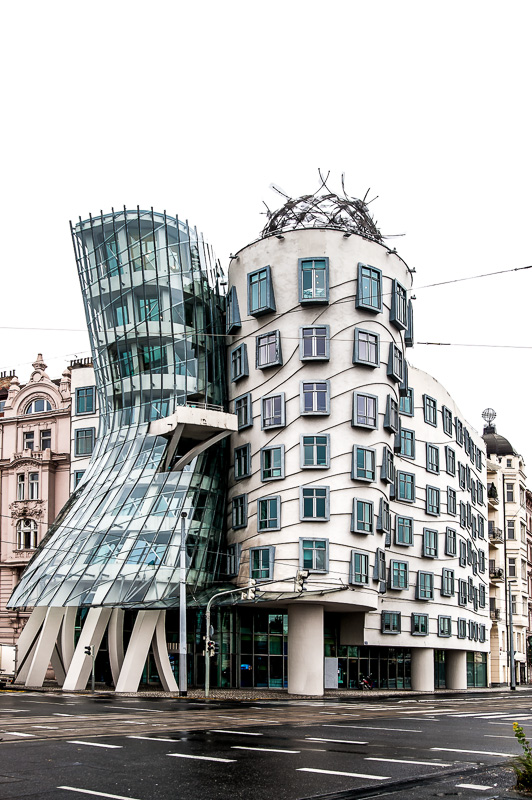 Dancing House in Prague
Dancing House in Prague
Perhaps the most unusual building in Prague is the Dancing House, otherwise known as Fred and Ginger. Built on a site that was destroyed by US bombs in WWII, the building was designed by architects Vlado Milunić and Frank Gehry and was completed in 1996.
The Dancing House was created as a tribute to Fred Astaire and Ginger Rogers, two of the best dancers in film history.
It is said that Gehry was inspired by their dancing style when he designed the building. The Dancing House is made up of two towers, which are connected by a large atrium. It is almost as if the two buildings are “dancing” with each other.
Nowadays, the building is being used as offices and a conference center. It also has a gallery with different exhibitions, as well as a restaurant. But what tourists mustn’t miss is the rooftop terrace that offers stunning panoramic views of Prague.
5. Admire the Lennon Wall
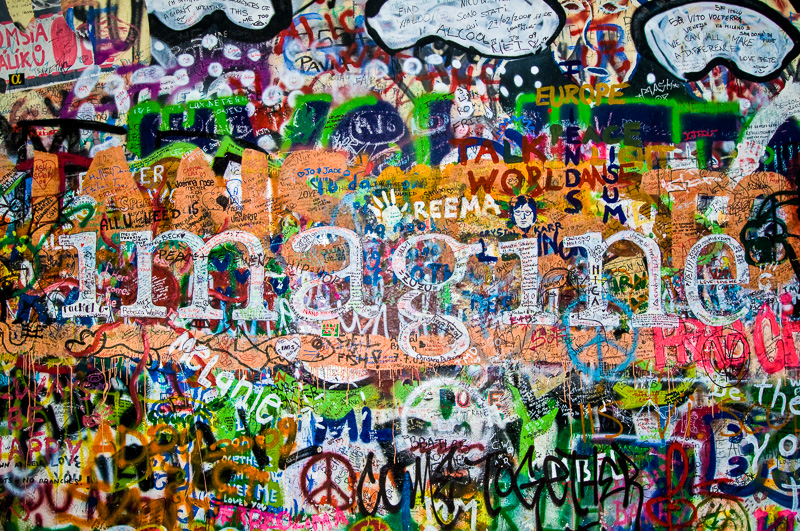 The Lennon wall in Prague
The Lennon wall in Prague
The Lennon Wall offers something different every time you visit. That is because it is constantly being repainted to address current political events and issues.
It was originally a normal wall with a few love poems and messages against the communist regime. It wasn’t until the assassination of John Lennon of the Beatles that the wall got its first look in 1980, with a painting of the famous rock star.
Since then, the John Lennon Wall has been renovated a number of times. The original painting of John Lennon has been covered under multiple layers of paint, but the idea behind the wall has not changed.
It is where you’ll find messages of hope and love, graffiti, and other artwork depicting current events around the world. It is one of the best places to see street art in Prague, and it’s also a great place to take photos to remember your trip.
6. Wander the streets of the Jewish District
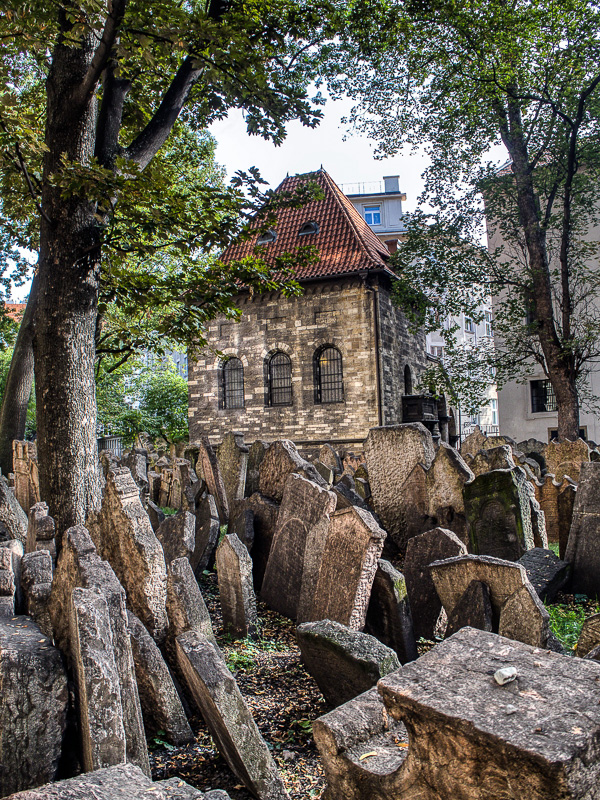 Old Jewish Cemetery
Old Jewish Cemetery
The Jewish Quarter is one of the oldest and most historic neighbourhoods in Prague. It was once a secluded area where only Jews were allowed to live. Today, it is a vibrant and lively area with a mix of Jewish and non-Jewish residents. There are also a number of bars, restaurants, and cafes to enjoy.
When you’re in the Jewish Quarter, be sure to explore some of its most famous attractions, including the Old-New Synagogue, the Old Jewish Cemetery, and the Klausen Synagogue. These sites are all located in the historic Josefov district, which is now a UNESCO World Heritage Site.
The Old-New Synagogue is the oldest active synagogue in Europe and was built in 1270 while the Old Jewish Cemetery is the city’s largest Jewish burial ground. It was dedicated to Jews due to the fact that they were not allowed to bury their dead outside of the Jewish Quarters.
The Jewish Museum is one of the largest and oldest Jewish museums in the world and it contains a wealth of Jewish history and artifacts. There is perhaps no better place to learn about the Jews and their horrific past in the Czech Republic than here.
7. Step back in time at the Národní Muzeum
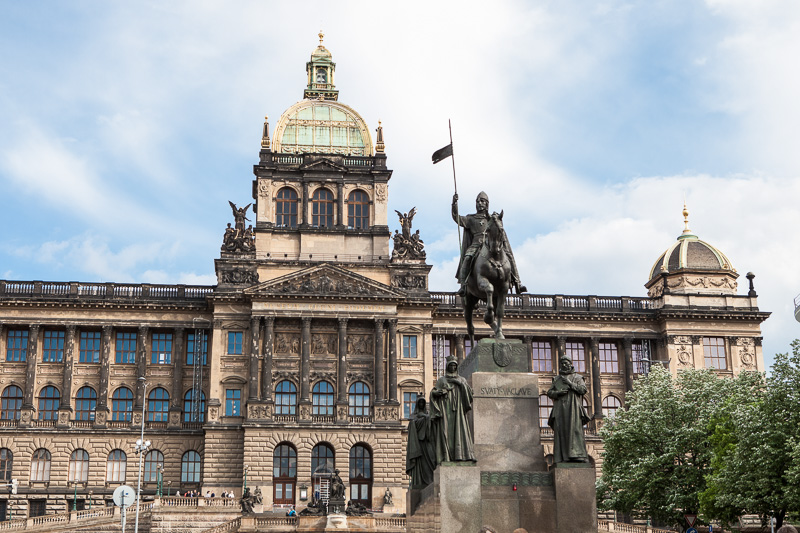 Facade of the National Museum
Facade of the National Museum
Národní Muzeum, also known as the National Museum, is arguably the most famous museum in Prague. The neoclassical building is situated on Wenceslas Square and is dedicated to Czech history and culture.
The museum was founded in 1818 by Emperor Franz I, but it wasn’t opened to the public until 1891. Since then, it has undergone many changes and renovations. It is home to nearly 14 million items from across the globe, making it one of the largest museums in the world.
Visitors can see everything from prehistoric artifacts to medieval manuscripts and modern artworks. The museum also has a large collection of Czech historical items, including ceremonial armor and weapons, as well as furniture and other decorative objects.
8. Relax in Stromovka Royal Game Reserve
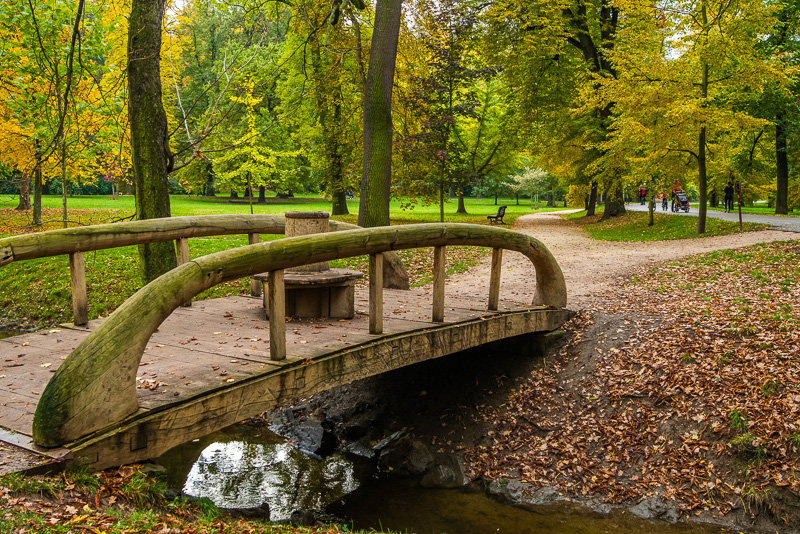 A serene place to visit in Prague
A serene place to visit in Prague
The Stromovka Royal Game Reserve is located in the middle of Prague and is a great place to spend a day outdoors, especially with kids. The park is the biggest in Prague and spans over an area of 95 hectares.
It has something for everyone, from playgrounds and ponds to biking and running trails. There are also several restaurants and cafes scattered throughout the park if you get hungry. The Park is also a popular place for people to have a barbecue or a picnic.
If you’re looking for something to do with kids and or to take a break from the city, the Stromovka Royal Game Reserve is definitely worth a visit!
9. Take a day trip to Český Krumlov
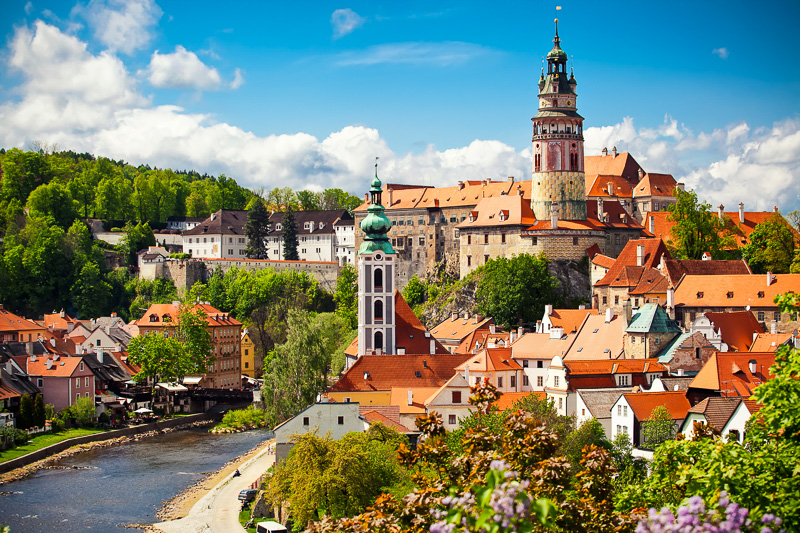 Beautiful view of the church and castle in Cesky Krumlov, Czech Republic
Beautiful view of the church and castle in Cesky Krumlov, Czech Republic
Český Krumlov is a charming medieval town located in Southern Bohemia, about 2.5 hours from Prague. The town is built around the river Vltava and is home to a beautiful castle, stunning churches, and picturesque cobblestone streets. It’s definitely worth the journey – there’s plenty to see and do in Český Krumlov!
The highlight of Český Krumlov is undoubtedly the castle, which was built in the 13th century by a noble Czech family.
The castle is one of the biggest in Europe and houses a number of buildings and palaces. Because of its architectural style and cultural traditions, the Český Krumlov Castle is listed as a national heritage site while the entire historic center is a UNESCO World Heritage Site.
When visiting Český Krumlov, don’t forget to explore the charming streets while you’re there! The town is packed with cute shops, restaurants, and cafes – perfect for a relaxing afternoon break.
Pro Tip: It is free to enter the courtyards and gardens, but if you want to see more of the castle, you must pay for a guided tour. There are various tours you can pick from that explore different parts of the castle grounds. We recommend the Basic Tour since it focuses on the original castle interiors from the Renaissance and Baroque eras.
Read more: Our day trip to Cesky Krumlov on board our Avalon Waterways Danube River Cruise.
10. Dine at Mozart’s Ballroom: Boccaccio Hall
If you are looking for something unique, how about a dining experience in the historic protected Boccaccio Hall while enjoying some of the best arias and duets from Mozart’s operas? The performance is led by musicians from prestigious Czech opera houses, and the dinner menu includes a three-course meal with Czech and Austrian influences.
If you are not into Mozart, then the experience of dining in one of the most gorgeous ballrooms in the Czech Republic is an amazing experience itself. The Boccaccio Hall is decorated with artificial marble, gold, and crystal glass, and its beauty is simply undeniable.
11. Visit Vyšehrad Castle
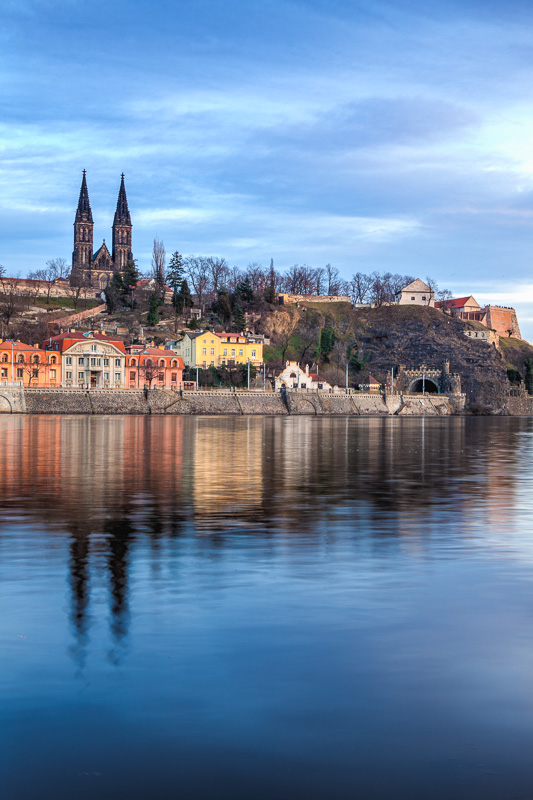 View on the Vysehrad fort in the dramatic evening,
View on the Vysehrad fort in the dramatic evening,
Vyšehrad Castle is one of Prague’s oldest and most historic landmarks. The castle is located atop a hill in the city’s Vyšehrad district and offers the best views of the Vltava River and the cityscape below.
The castle is said to have been built in the 10th century, and has been used as a fortress, royal residence, and prison over the years. Today, Vyšehrad Castle is a popular tourist attraction and is home to several museums and gardens. The highlights in Vyšehrad Castle are the Basilica of St. Peter and St. Paul. The basilica was built in the 11th century and has impressive 58-meter tall twin towers that can be seen across the river.
Before you leave, make sure you check out the Vyšehrad Cemetery. The cemetery is the final resting place of many famous Czechs, including Antonín Dvořák, Franz Kafka, and Bedřich Smetana.
There are many cafes, restaurants, and even beer gardens inside the castle, so visitors can relax as they soak in the natural landscape. It is also considerably less touristy than Prague Castle, which is perfect if you want to escape the crowds!
12. Look out for David Cerny’s Art
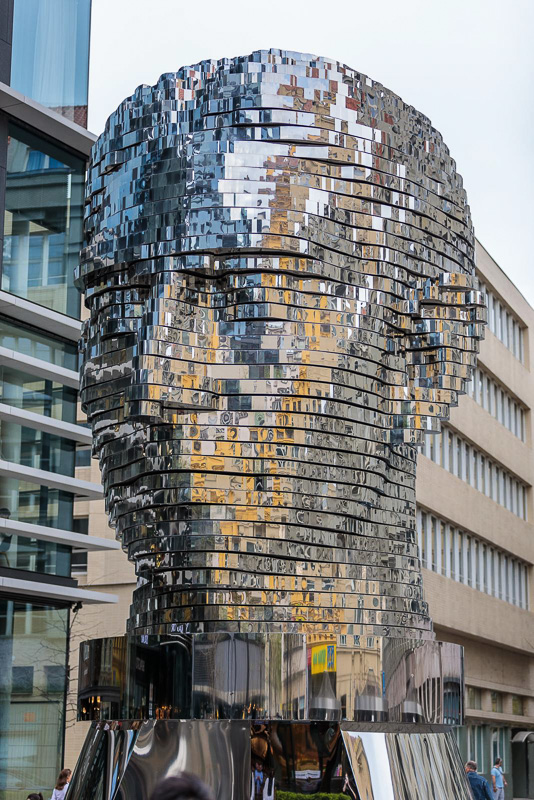 Rotating statue of the head of Franz Kafka
Rotating statue of the head of Franz Kafka
David Cerny is one of the most famous and controversial artists in the world. Born in Prague, he has become known for his satirical and often subversive art. Much of his work comments on social and political issues and many of his pieces have been banned or met with strong opposition. Despite this, Cerny’s art is highly respected and has been exhibited all over the world.
In Prague, Cerny’s work can be seen all over the city. One of his most famous pieces is the Rotating Head of Franz Kafka. It is a 42-layer sculpture that rotates constantly throughout the day. The head stops for 15 minutes twice an hour at the perfect stop before continuing to spin again.
Another popular piece is the statue of King Wenceslas on an upside-down head horse. No one knows exactly what his intention was when creating the statue, but most people believe that he created it to mock the famous statue of King (and later, Saint) Wenceslas that sits in Wenceslas Square.
13. Rent a pedal boat in the Vltava River
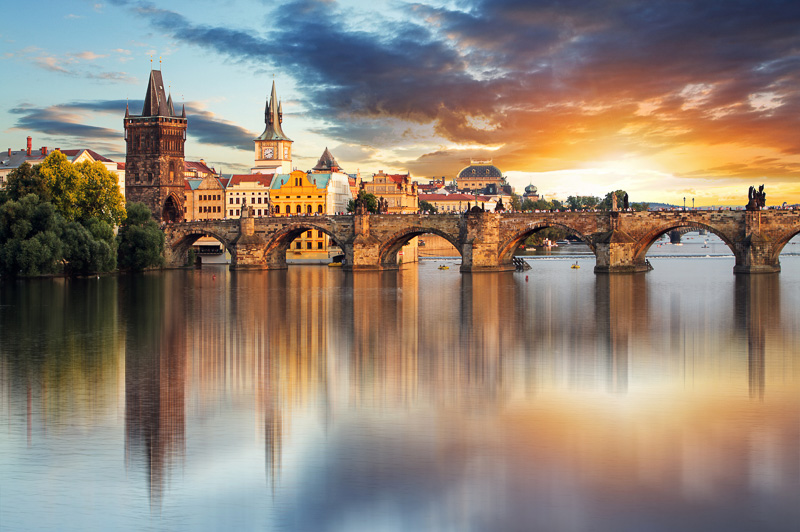
If you want a relaxing activity, you’ll enjoy peddling around the Vltava River. It’s the longest river in the Czech Republic and runs through the center of Prague.
You’ll find places to rent pedal boats at several points along the river, but the most popular are in Prague’s New Town near the Slovanský Ostrov island. The island creates a more sheltered area on the river away from bigger boats, and you also get a great view of the Legion Bridge from the water.
You can pick up a pedal boat from Rental boats and pedal boats on the Slobansky Ostrov island.
14. Visit the Bone Church ‘Sedlec Ossuary’ and Medieval Town of Kutná Hora
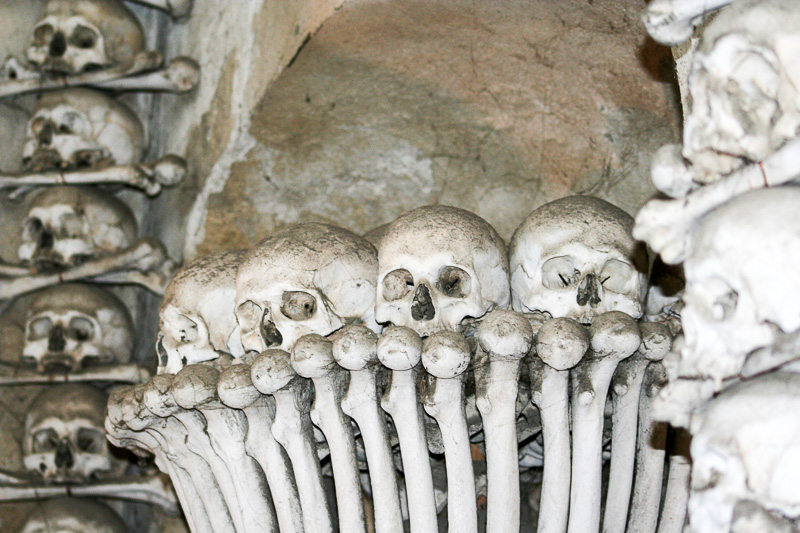 Skulls and bones inside Sedlec Ossuary
Skulls and bones inside Sedlec Ossuary
If you’re thinking you’d like to take another day trip from Prague, then a trip to the medieval town of Kutna Hora is a great option. The town is a UNESCO World Heritage Site and known for its gothic cathedral of St. Barbara and the Sedlec Ossuary, a Roman Catholic chapel that is adorned with 40,000 human skeletons. Creepy!
As well as visiting this creepy but also strangely cool church, the town is brimming with medieval and Baroque monuments and landmarks. The former Royal Mint was once in operation here, since the town is known for its silver mines.
You can even stop off at an Old Bohemian tavern and enjoy a craft beer or two.
15. Learn about the terrible history at Terezin Concentration Camp
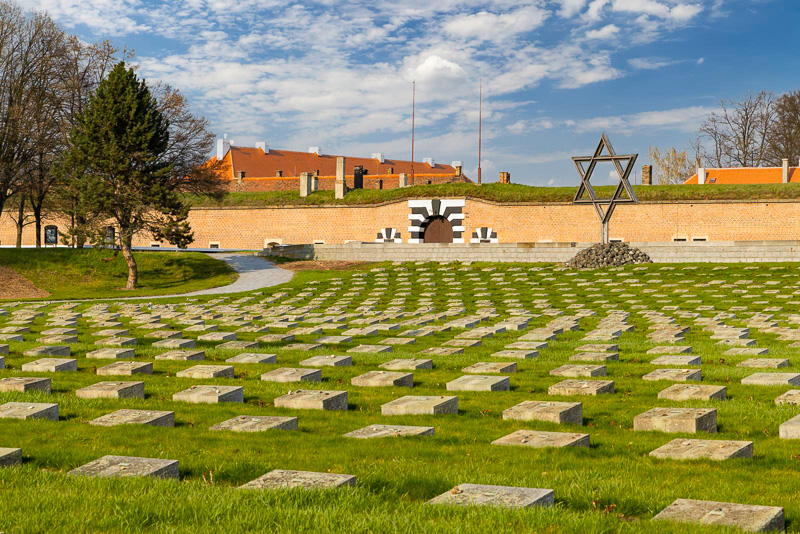 Small fortress and memorial to victims 2nd World War
Small fortress and memorial to victims 2nd World War
A huge part of Czech history is its part in WWII. The Czech Republic was occupied by Nazi Germany, which set up several concentration camps in the country. One of these is the Terezin Concentration Camp, which lies just 90 miles north of Prague. The camp had two main functions; it was a waystation to the extermination camps and a “retirement settlement” for elderly Jews.
It is said that conditions were deliberately kept poor to quicken the death of its prisoners.
Today the camp has been turned into a museum that aims to educate its visitors about this terrible history and the significance it had during WWII. Though it’s not pretty, it’s one of the most important attractions near Prague that must not be skipped.
16. Relax in beer spas
Have you ever heard of a beer spa? Are you imagining sitting in a tub full of sudding beer? Well, you’re actually right. A beer spa is when you soak in a beer bath in an oak tub, infused with beer extracts. Whilst soaking in beer, the beverage of choice to pair with this is, yep, beer – most spas offer unlimited beer, and even have a wheat straw bed and a cedar sauna (in some rooms).
This was once a hidden gem only the locals knew about, but has since become well known (thank you TikTok generation), and now there are multiple beer spas across the city.
We recommend the OG, aptly named SPA BEERLAND – The First Tank Beer Spa Prague, which is located in Prague’s New Town. It’s the largest and most luxurious spa, as well as being the pioneers of this wellness idea.
Where to stay in Prague
Choosing where to stay in Prague is easy, as the city is quite walkable, so as long as you stay close to Old Town you really can’t find a bad neighborhood.
For a fairy-tale stay, Staré Město (Old Town) puts you right in the thick of it. Within walking distance is the astronomical clock, gothic church spires, and cobbled lanes. It’s touristy, yes, but also irresistibly atmospheric. Just across the river, Malá Strana (Lesser Town) offers a quieter kind of vibe.
If you’d rather swap souvenir shops for indie galleries and beer halls, head to Vinohrady or Žižkov, both brimming with local life, leafy parks, and a buzzzing nightlife scene.
We have hand-selected a few top rated hotels in Prague, based on great reviews, good location, and clean rooms and well-maintained facilities:
- Hotel Metamorphis: historic building in the heart of Prague’s Old Town, just 200 feet from Prague’s Old Town Square and 1,150 feet from Wenceslas Square. Excellent value for money. See prices and availability here.
- Quentin Prague Hotel: 4-star modern hotel located within walking distance to the Prague Astronomical Clock, Old Town Square and Charles Bridge. See prices and availability here.
- Hotel Rott: Located in the heart of historic town and within walking distance to popular attractions. Guests rave about the champagne breakfast! See prices and availability here.
If you’re looking for other accommodation in Prague you can use the map below to compare hotels and short-term rental options.
Final thoughts
Prague is fascinating and has so much to see and do. Its history dates back to medieval times, and the city is brimming with Baroque and Gothic architecture. Simply walking the streets is an exciting thing to do.
With world-class museums, stunning parks, and ornately designed bridges, as well as unusual pieces of art and architecture, you can see it all in Prague.
We hope you identified a few iconic landmarks and hidden gems in the Czech Capital from this guide to explore on your visit.
More Central Europe Travel Tips
Pin To Save It On Pinterest
